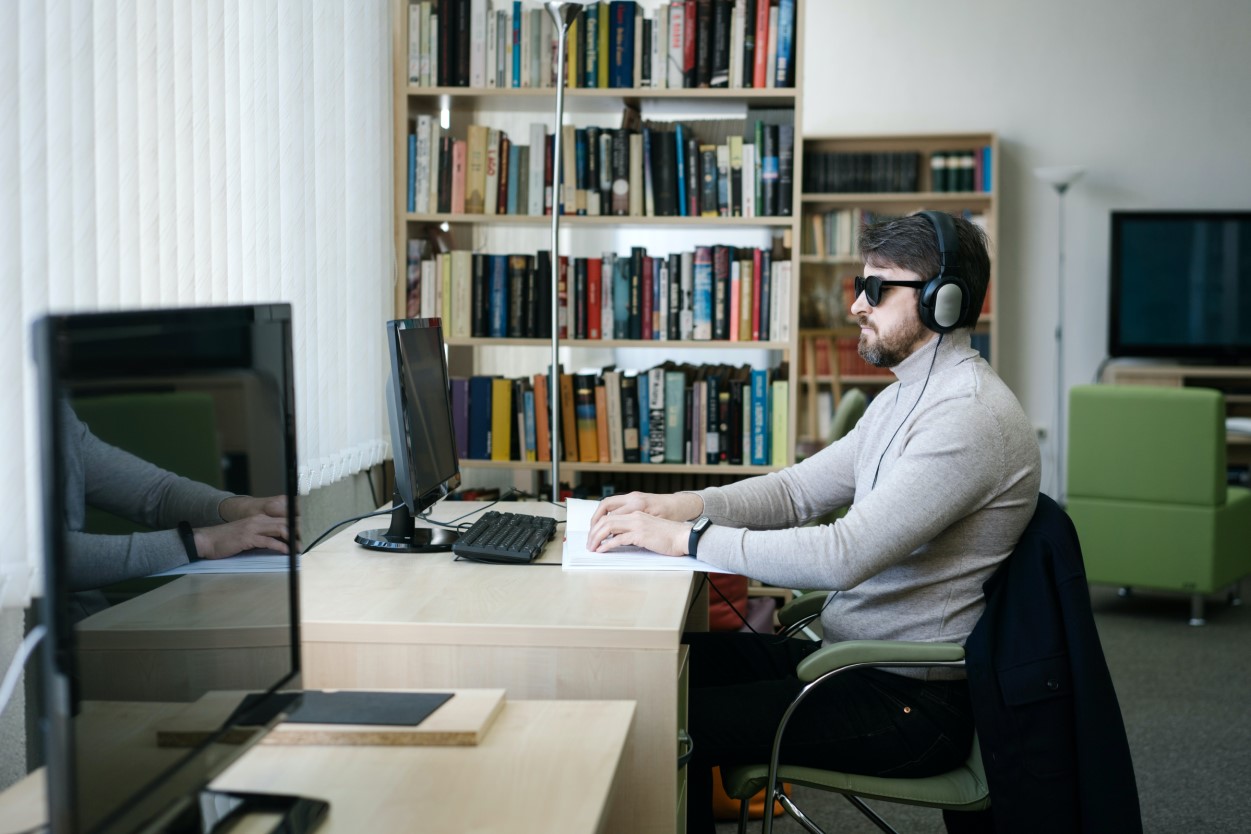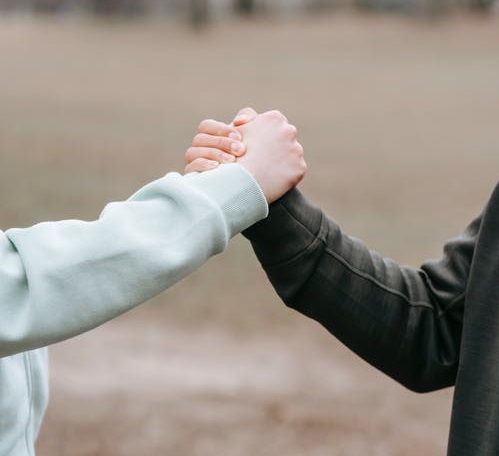
Our Approach
We use rich audio (sonification) together with the sense of touch (haptics) to provide a faster and more nuanced experience of graphics on the web. For example, by using spatial audio, where the user experiences the sound moving around them through their headphones, information about the spatial relationships between various objects in the scene can be quickly conveyed without reading long descriptions. In addition, rather than only passive experiences of listening to audio, an optional haptic device can help the user literally feel aspects like regions of a landscape, objects found in a photo, or the trend of a line on a graph. This will permit interpretation of maps, charts, and photographs, in which the visual experience is replaced with multimodal sensory feedback, rendered in a manner that helps overcome access barriers for users who are blind, deafblind, or partially sighted.
Engaging the Community
Collaborating with the community is key when creating accessible technology. Our team is partnering with Gateway Navigation CCC Ltd and the Canadian Council of the Blind (CCB), a consumer organization of Canadians who are blind, to ensure that our system is in line with the needs of the community. We are in regular contact with community members as part of our co-design approach, who are helping guide the development process but there is always room for more voices. If you'd like to contribute to the project, we invite you to fill out our community survey.

Funding and Partnerships
This project is carried out by McGill University's Shared Reality Lab (SRL), in strategic partnership with Gateway Navigation CCC Ltd and the Canadian Council of the Blind (CCB). The project was funded by Innovation Science Economic Development Canada through the Assistive Technology Program and is now being funded by Healthy Brains, Healthy Lives through the Accelerate Neuro Commercialization Grant.
Funding Timeline
2021-2022 Innovation Science Economic Development Canada, Assistive Technology Program
2022 Healthy Brains, Healthy Lives, Ignite Neuro Commercialization Grant
2022-2023 Healthy Brains, Healthy Lives, Accelerate Neuro Commercialization Grant, in partnership with: Haply Robotics
2023 Humanware/The American Printing House corporate grant